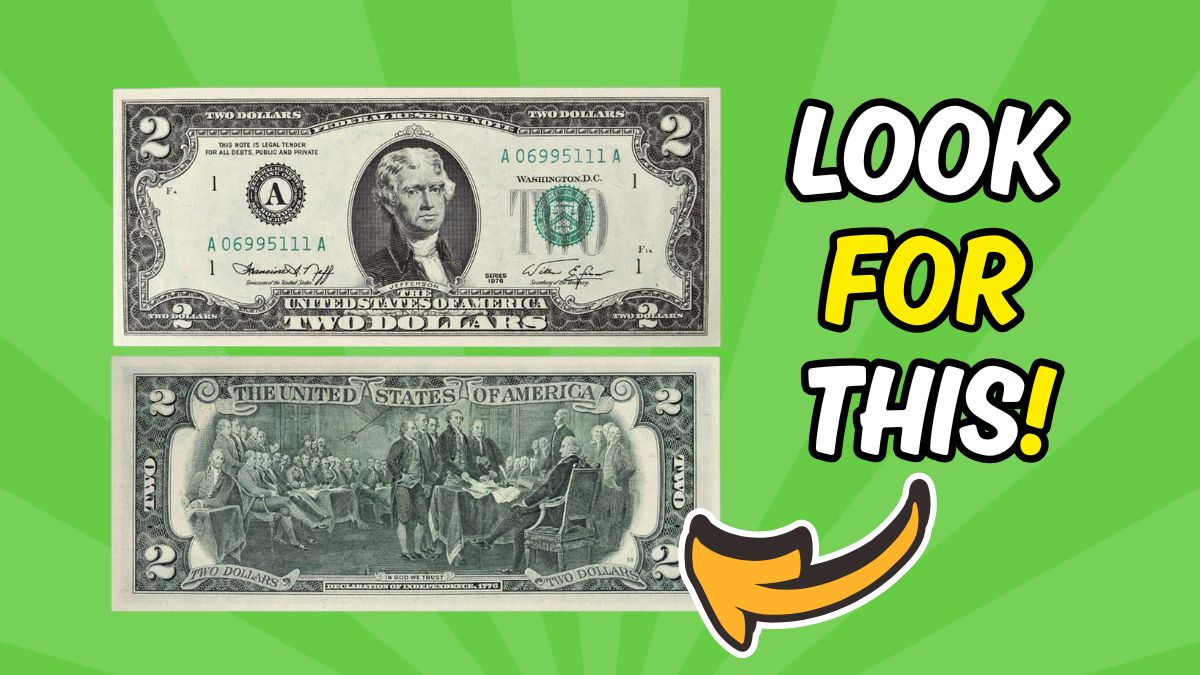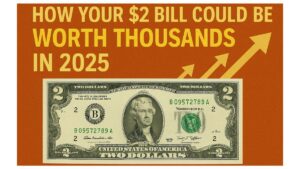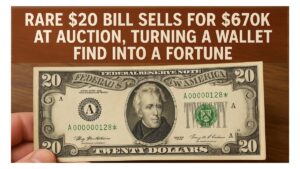The $2 bill is one of the most intriguing and least understood denominations in U.S. currency.
While often dismissed as a novelty, certain $2 bills issued between 1928 and 1976 have become highly sought after by collectors, with some fetching prices exceeding $4,500.
But what makes these bills so valuable? Let’s delve into the factors that contribute to their worth.
Understanding the $2 Bill Series (1928–1976)
Between 1928 and 1976, the U.S. Treasury issued several series of $2 bills, each with unique characteristics:
Series Breakdown
| Series | Year(s) Issued | Seal Color | Notable Features |
|---|---|---|---|
| 1928 | 1928 | Red | First small-size notes |
| 1928A | 1928 | Red | Minor design changes |
| 1928B | 1928–1934 | Red | Slight modifications |
| 1928C | 1934–1945 | Red | Increased circulation |
| 1928D | 1934–1945 | Red | Higher print volume |
| 1928E | 1934–1945 | Red | Smaller print run |
| 1928F | 1934–1945 | Red | Relatively common |
| 1928G | 1934–1945 | Red | Less popular |
| 1953 | 1953 | Red | New design elements |
| 1953A | 1953 | Red | Minor updates |
| 1953B | 1953 | Red | Slight design tweaks |
| 1953C | 1953 | Red | Increased production |
| 1963 | 1963 | Red | Design changes |
| 1963A | 1963 | Red | Further modifications |
| 1976 | 1976 | Green | Bicentennial design |
Factors Influencing Value
Several elements determine the value of a $2 bill:
- Condition: Uncirculated bills are worth significantly more than circulated ones.
- Series and Year: Earlier series and limited print runs increase desirability.
- Star Notes: Bills with a star in the serial number are replacement notes and are rarer.
- Unique Serial Numbers: Patterns like ladder numbers or repeating digits can enhance value.
- Errors: Printing mistakes or misalignments make certain bills highly collectible.
Estimated Values by Series
| Series | Circulated Value | Uncirculated Value | Star Note Value |
|---|---|---|---|
| 1928 | $5–$175 | $500–$2,800 | $200–$350 |
| 1928A | $5–$175 | $500–$2,800 | $200–$350 |
| 1928B | $5–$175 | $500–$2,800 | $200–$350 |
| 1928C | $4–$40 | $30–$40 | $50–$100 |
| 1928D | $2–$18 | $15–$18 | $20–$40 |
| 1928E | $4–$25 | $16–$25 | $50–$100 |
| 1928F | $4–$12 | $15–$30 | $50–$100 |
| 1928G | $2–$10 | $12–$18 | $20–$40 |
| 1953 | $5–$20 | $12–$18 | $20–$40 |
| 1953A | $5–$20 | $12–$18 | $20–$40 |
| 1953B | $5–$20 | $12–$18 | $20–$40 |
| 1953C | $5–$20 | $12–$18 | $20–$40 |
| 1963 | $5–$20 | $12–$18 | $20–$40 |
| 1963A | $5–$20 | $12–$18 | $20–$40 |
| 1976 | $2–$10 | $10–$35 | $20–$900 |
Note: Values are approximate and can vary based on condition and market demand.
Identifying Valuable $2 Bills
To determine if your $2 bill is valuable:
- Examine the Series Year: Earlier series, especially from 1928 to 1953, are more sought after.
- Check the Condition: Uncirculated bills in pristine condition fetch higher prices.
- Look for Star Notes: A star at the end of the serial number indicates a replacement note.
- Inspect Serial Numbers: Patterns like ladder numbers (12345678) or repeating digits (11111111) are highly collectible.
- Identify Errors: Misprints or misalignments can significantly increase a bill’s value.
How to Assess and Sell Your $2 Bill
If you believe you have a valuable $2 bill:
- Get It Graded: Professional grading services can authenticate and assess the condition of your bill.
- Consult Experts: Reach out to currency dealers or numismatic experts for evaluations.
- Sell Through Reputable Channels: Auction houses and specialized currency dealers can help you sell your bill at market value.
While the $2 bill may seem ordinary, certain issues from 1928 to 1976 hold significant value among collectors. By understanding the factors that contribute to their worth, you can determine if your bill is a hidden treasure. Always consult with professionals when in doubt, and happy collecting!
FAQs
What makes a 1928 $2 bill valuable?
The 1928 $2 bill is part of the first small-size notes issued by the U.S. Treasury. Its age, design, and limited availability contribute to its value.
Are all 1976 $2 bills worth more than face value?
No, most 1976 $2 bills are worth face value. However, certain bills with unique serial numbers, star notes, or errors can be worth significantly more.
How can I determine the value of my $2 bill?
Factors like the series year, condition, presence of star notes, unique serial numbers, and errors influence the value. Consulting a currency expert or using online resources can help assess its worth.



